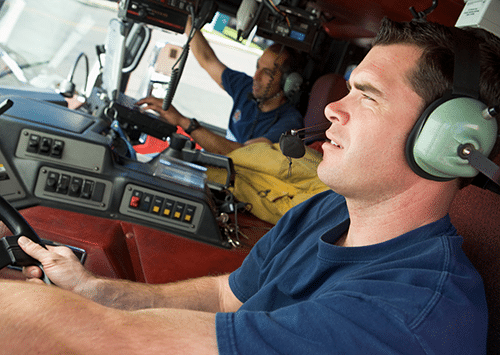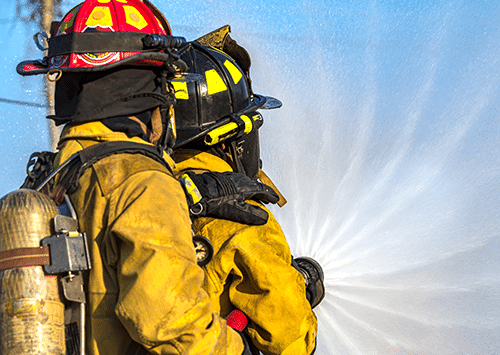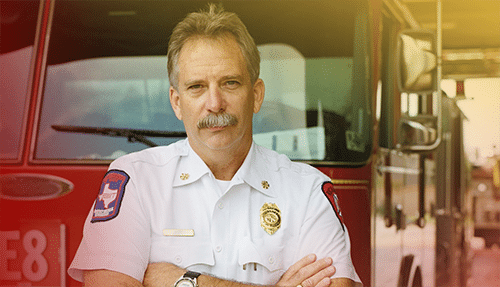December 1, 2015

Why Firefighters Should Complete a Thorough Size-Up at Every Fire Incident
Industry:
Solution:

 |
| Performing a size-up during a dynamically changing event like a structure fire is essential. Information is changing so rapidly that your brain can quickly become overloaded while trying to process and comprehend information. |
 But, if I gave you a list of seven different, random two-digit numbers numbers every 30 seconds over the course of five minutes, and then asked you to remember the 18th number I gave you, your performance would likely be abysmal. Why? Information overload. Under stress, you'll do better when you process small amounts of information versus large amounts of information over a longer period of time.
Think back to the early decision maker of our species, the cave dweller. Their genetic encoding of how to survive in high-stress, high-consequence environments is the same genetic encoding you have in your DNA. Imagine the cave dweller is out on the daily hunt for food. A predator is fast approaching and it's game on. The "Fight or Flight" response engages.
The cave dweller is going to have a bunch of clues and cues to process in a compressed amount of time. But there's really only a handful of clues that are going to be important to survival, perhaps five to seven, but definitely not dozens or hundreds. And while the scene is rapidly unfolding, it's all going to be over quickly ... perhaps in 10 to 30 seconds. The size-up must be rapid and accurate. Sounds a lot like a fireground size-up, doesn't it? Your genetic engineering is working in your favor when it comes to making an accurate, timely incident scene size-up.
The secondary size-up is as important as the primary. Again, there is a misconception the secondary size-up is to capture what may have been missed in the primary. And while this may have an element of truth, from the perspective of situational awareness, the secondary size-up serves a completely separate, yet critically important role.
The secondary size-up should take considerable more time. Two to three minutes is not out of the realm of possibility. In addition to capturing clues and cues that confirm or refute the intuition of your initial size-up, the secondary size-up is your first opportunity to develop "Level 3 Situational Awareness" and predict future events.
The ability to predict future events is a catastrophically important the skillset for a commander or company officer. To predict where the event is going, and how fast it's going to get there, you must first understand the SPEED at which the incident is moving. And every dynamic incident scene has a speed.
The secondary size-up, conducted over a minute or two, allows you better assess the speed of the incident, as you watch conditions change over a minute or two. Armed with that information, you can now make reasonable predictions as to whether the resources you have on hand are going to be able to outmaneuver the incident based on it's speed.
About the Author
Dr. Gasaway is widely considered one of the nation’s leading authorities on situational awareness and the human factors that complicate first responder decision making. In addition to his 30-plus years in the fire service, including 22 years as a fire chief, Dr. Gasaway has a second passion: Uncovering and applying research in brain science for the benefit of first responders. His website, Situational Awareness Matters (www.SAMatters.com) welcomes 50,000 visitors a month from 156 countries. He can be reached via e-mail at Support@RichGasaway.com.
But, if I gave you a list of seven different, random two-digit numbers numbers every 30 seconds over the course of five minutes, and then asked you to remember the 18th number I gave you, your performance would likely be abysmal. Why? Information overload. Under stress, you'll do better when you process small amounts of information versus large amounts of information over a longer period of time.
Think back to the early decision maker of our species, the cave dweller. Their genetic encoding of how to survive in high-stress, high-consequence environments is the same genetic encoding you have in your DNA. Imagine the cave dweller is out on the daily hunt for food. A predator is fast approaching and it's game on. The "Fight or Flight" response engages.
The cave dweller is going to have a bunch of clues and cues to process in a compressed amount of time. But there's really only a handful of clues that are going to be important to survival, perhaps five to seven, but definitely not dozens or hundreds. And while the scene is rapidly unfolding, it's all going to be over quickly ... perhaps in 10 to 30 seconds. The size-up must be rapid and accurate. Sounds a lot like a fireground size-up, doesn't it? Your genetic engineering is working in your favor when it comes to making an accurate, timely incident scene size-up.
The secondary size-up is as important as the primary. Again, there is a misconception the secondary size-up is to capture what may have been missed in the primary. And while this may have an element of truth, from the perspective of situational awareness, the secondary size-up serves a completely separate, yet critically important role.
The secondary size-up should take considerable more time. Two to three minutes is not out of the realm of possibility. In addition to capturing clues and cues that confirm or refute the intuition of your initial size-up, the secondary size-up is your first opportunity to develop "Level 3 Situational Awareness" and predict future events.
The ability to predict future events is a catastrophically important the skillset for a commander or company officer. To predict where the event is going, and how fast it's going to get there, you must first understand the SPEED at which the incident is moving. And every dynamic incident scene has a speed.
The secondary size-up, conducted over a minute or two, allows you better assess the speed of the incident, as you watch conditions change over a minute or two. Armed with that information, you can now make reasonable predictions as to whether the resources you have on hand are going to be able to outmaneuver the incident based on it's speed.
About the Author
Dr. Gasaway is widely considered one of the nation’s leading authorities on situational awareness and the human factors that complicate first responder decision making. In addition to his 30-plus years in the fire service, including 22 years as a fire chief, Dr. Gasaway has a second passion: Uncovering and applying research in brain science for the benefit of first responders. His website, Situational Awareness Matters (www.SAMatters.com) welcomes 50,000 visitors a month from 156 countries. He can be reached via e-mail at Support@RichGasaway.com. Related Resources

Measuring Readiness: Building a Foundation with Efficient Certification Testing
March 27 2025

NFPA Offers Free Distributed Energy Resources Training; Vector Solutions Partnering to Get it into Your Hands
March 26 2025

A Guide to Selecting the Right Fire Service Training Management System
February 10 2025
Explore our software solutions designed to help your organization succeed
Request a Demo



